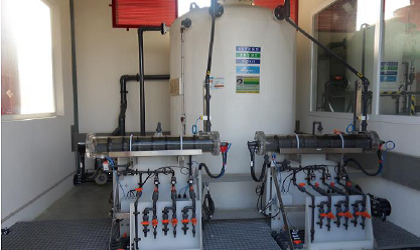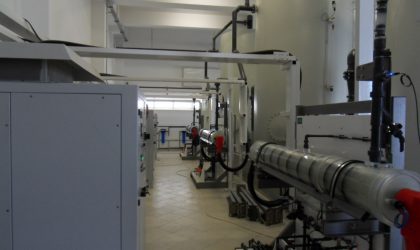Electrochlorination
Although the use of commercial sodium hypochlorite as a disinfectant / oxidant in potable and waste water plants has proved to be an effective solution, the problems associated with it in relation to its storage and use cannot be disregarded in many cases. In other words, commercial hypochlorite is classified as a corrosive product, and therefore its storage facilities must comply with regulations on this field such as APQ-6 of RD 656/2017. Additionally there are risks associated with its manipulation which have implication to the health and safety of the personnel involve with these facilities.

Electrochlorination is defined as a process of on-site generation of a low concentration sodium hypochlorite solutions (approximately 0.8%) based on its precursors: salt and electricity. Due to its low concentration, the 0.8% solution generated is not considered to be corrosive under the current CLP Regulation, and therefore it is not affected by the previously mentioned APQ-6 and makes its manipulation and handling considerably safer. Additionally, the rate of hypochlorite decomposition increases with its concentration, and therefore the 0.8% hypochlorite solution generated by electrochlorination has a higher stability and decomposes slower than the higher concentration commercial hypochlorite.

